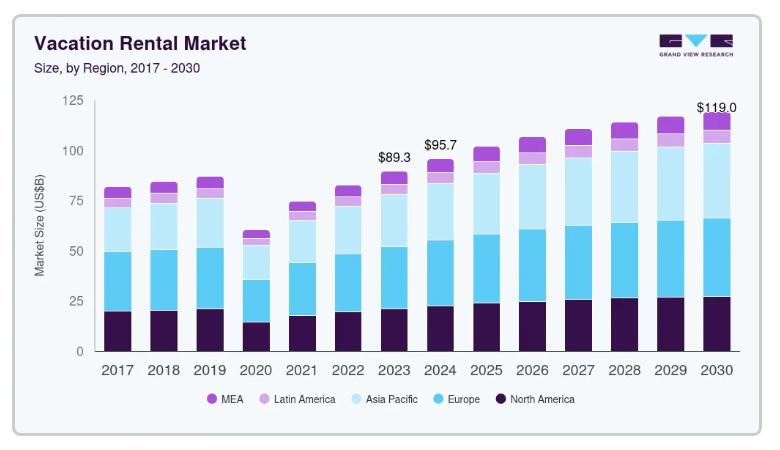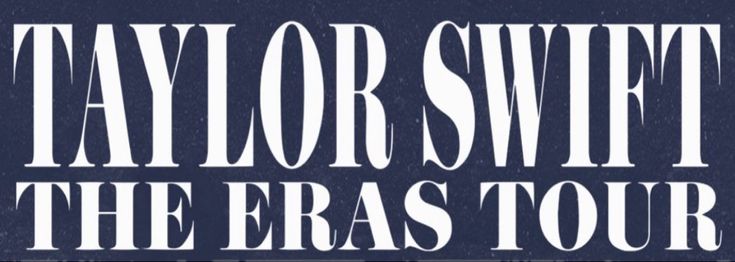Master vacation rental pricing factors with our complete guide. Learn proven strategies to increase revenue, optimize rates, and boost occupancy for your property.
%20(1).png)
Master vacation rental pricing factors with our complete guide. Learn proven strategies to increase revenue, optimize rates, and boost occupancy for your property.
%20(1).png)
You have a great property. Your listing is stunning. Your guests leave glowing reviews. But your revenue isn't where it should be.
The problem isn't your property. It's your pricing strategy.
Getting your pricing right is the difference between a vacation rental that breaks even and one that generates real profit. Too many property managers leave thousands of dollars on the table every year by not understanding how vacation rental pricing factors work together.
This guide will walk you through the ins and outs of pricing your vacation rental. You'll learn the core vacation rental pricing factors that drive rates, proven vacation rental pricing strategies, and exactly how to apply them to your properties right now. If you're just starting out, check out How to Start a Vacation Rental Business in 2025 | Complete Guide.
The vacation rental market is more competitive today than it's ever been. According to research from grandviewresearch The global vacation rental market size was estimated at USD 89.32 billion in 2023 and is projected to reach USD 119.0 billion by 2030.

Your short term rental pricing strategy is one of the few things you can control.
When you price right, a few things happen: You get more bookings and more quickly fill your calendar and your annual revenue increases. The problem is that there’s no one “correct” price. So your ideal pace varies with dozens of factors that shift during the year.
The best vacation rental property managers don't guess. They build a system that adapts automatically.
Before setting rates, understand what influences pricing. These factors work together.
.jpg)
There are natural demand cycles in your location. Beach properties peak in summer. Mountain homes are strongest in winter (for skiing) or summer (for hiking). swing as much as 30-40% from high season to low season. Your pricing should reflect that reality.
This is where most property managers miss money. Consider Taylor Swift's Eras Tour in 2023.it drove approximately 250,000 Airbnb check-ins. Properties near event venues could charge 20-50% premium rates for those specific dates.
Research your area's events on your calendar six to nine months in advance. Event-based pricing can add 25-50% to your revenue.

Your competitors set a pricing ceiling. If similar properties charge $150/night and you charge $250/night, you need a clear reason why better amenities, location, or reviews.
Smart property managers monitor competitor pricing weekly to understand market position. Are most properties discounting? Or are rates holding steady with strong bookings?
Properties with private pools earn 13% higher average daily rates. Hot tubs, game rooms, and premium views command premiums. Identify what makes your property special and price accordingly.
Different guests book differently. Families book early and stay longer. Solo travelers book last-minute. Business travelers prefer weekdays. Couples prefer weekends.
Understanding your typical guest helps you set minimum stays and plan promotions effectively.
Properties within walking distance of beaches or downtown areas charge premiums. Remote properties need unique amenities or lower prices. Location affects both your rate and your target market.
Add up all monthly costs: mortgage, taxes and insurance, utilities, cleaning and maintenance, software and platform fees. The cost of fixed costs do not vary from month to month. Variable costs vary with the number of bookings.
The break-even point is the least amount you can charge per night and still have all your costs covered. Add your preferred markup percentage on top. That's your absolute floor. Never price below this permanently you'll lose money.
Look Up 5-10 properties similiar to yours in your area. What are they charging? How do their photos compare? What amenities do they offer? Do they have a long waiting list or plenty of availability?
When you see similar properties charge $120-150/night, that's your market range. Now decide if you should be at the low end, high end, or middle based on your property's quality.
.jpg)
Build a calendar showing what you'll charge each month. Identify high season (peak demand), shoulder season (medium demand), and low season (light demand).
Most property managers use a tiered approach:
This keeps bookings flowing while maximizing peak-period revenue.
A one-night stay requires cleaning and turnover. A seven-night stay requires cleaning only twice. Price single nights higher to cover turnover costs. Offer 5-10% discount for 7-night stays and 15-20% for 30-night stays.
During slow season, shorten your minimum stay requirement to fill calendar gaps.
Mark major local events on your calendar. According to, event-based pricing significantly impacts revenue.
For dates around major events, plan rate increases of 25-50%.

Static pricing is dead. Some weeks are worth more than others. Dynamic pricing adjusts rates based on real-time demand signals.
Research shows properties using dynamic pricing earn 20-40% more annual revenue than static pricing. On a $50,000/year property, that's an extra $10,000-20,000 per year.
Dynamic pricing analyzes current demand, competitor pricing, your booking pace, seasonality, local events, and historical data. Then it recommends (or automatically sets) optimal rates daily.
You have unbooked dates approaching.
Option 1: keep rates high and watch nights stay empty.
Option 2: reduce rates 2-7 days out to attract last-minute bookers.
Last-minute pricing attracts flexible travelers. Properties offering aggressive last-minute deals see 20% higher occupancy rates.
Guests who book 90+ days in advance get 5-10% discount. In return, you lock in bookings early and plan better. This smooths your revenue and shows guests who plan ahead that you reward planning.
Charge 15-30% more on weekends than weekdays. A property charging $100/night on Tuesday might charge $130/night on Saturday. This maximizes revenue from higher-demand nights.
Longer minimum stays reduce turnovers. Set two-night minimums on weekends, one-night on weekdays. Or three-night during peak season, one-night off-season.
Adjust minimums as demand changes. As event dates approach, lower minimums to attract last-minute bookings.
ADR = total revenue ÷ nights booked. If you earned $10,000 in a month with 80 nights booked, your ADR is $125/night. Track this monthly and compare to competitors.
Occupancy rate = nights booked ÷ nights available. Aim for 60-75% occupancy. Above 80% suggests you're underpriced. Below 50% suggests overpricing or weak marketing.
RevPAR = ADR × Occupancy Rate. A $150 ADR with 70% occupancy = $105 RevPAR. This shows whether you're balancing rate and occupancy effectively.
Most vacation rentals operate on 20-45% net margins. Urban studios: 20-30%. Beach homes: 25-35%. Luxury villas: 30-45%. According to https://www.businessofapps.com/data/airbnb-statistics/, knowing your target margin is crucial.
Mistake 1: Setting rates without understanding costs. You can't price profitably if you don't know your expenses.
Mistake 2: Never adjusting rates. Markets change. Review and update rates monthly.
Mistake 3: Overpricing during peak season. There's a limit. If you price too high, guests book competitors instead.
Mistake 4: Underpricing during low season. Discount to maintain occupancy, but not below your break-even point.
Mistake 5: Ignoring local events. Properties near events that don't adjust pricing lose thousands.
Mistake 6: Not tracking competitor pricing. If you don't know what competitors charge, you're pricing blind.
Week 1: Calculate your break-even rate. Research 5-10 competitor properties. Understand your market.
Week 2: Identify your high, shoulder, and low seasons. Set seasonal rates. Mark major events. Learn more about vacation rental management.
Week 3: Adjust rates on all platforms. Set minimum stay requirements for each season. Create early-bird and last-minute pricing.
Week 4+: Track occupancy, ADR, and RevPAR monthly. Monitor competitor rates weekly. Adjust quarterly based on results.
After 30 days, you'll see how changes affect bookings. After 90 days, you'll have enough data to optimize further.
Your pricing strategy directly determines revenue and profitability. Get it right, and your property fills consistently with strong returns. Get it wrong, and you leave thousands on the table.
Start by understanding your costs and market. Build a seasonal pricing calendar. Use dynamic pricing tools to automate adjustments. Track key metrics. Adjust quarterly.
Within three months, you'll see significant revenue improvement. Your property deserves a pricing strategy as good as its quality. Visit https://www.guestara.com/ to learn more about optimizing your vacation rental business.
Master vacation rental pricing factors with our complete guide. Learn proven strategies to increase revenue, optimize rates, and boost occupancy for your property.
%20(1).png)
You have a great property. Your listing is stunning. Your guests leave glowing reviews. But your revenue isn't where it should be.
The problem isn't your property. It's your pricing strategy.
Getting your pricing right is the difference between a vacation rental that breaks even and one that generates real profit. Too many property managers leave thousands of dollars on the table every year by not understanding how vacation rental pricing factors work together.
This guide will walk you through the ins and outs of pricing your vacation rental. You'll learn the core vacation rental pricing factors that drive rates, proven vacation rental pricing strategies, and exactly how to apply them to your properties right now. If you're just starting out, check out How to Start a Vacation Rental Business in 2025 | Complete Guide.
The vacation rental market is more competitive today than it's ever been. According to research from grandviewresearch The global vacation rental market size was estimated at USD 89.32 billion in 2023 and is projected to reach USD 119.0 billion by 2030.

Your short term rental pricing strategy is one of the few things you can control.
When you price right, a few things happen: You get more bookings and more quickly fill your calendar and your annual revenue increases. The problem is that there’s no one “correct” price. So your ideal pace varies with dozens of factors that shift during the year.
The best vacation rental property managers don't guess. They build a system that adapts automatically.
Before setting rates, understand what influences pricing. These factors work together.
.jpg)
There are natural demand cycles in your location. Beach properties peak in summer. Mountain homes are strongest in winter (for skiing) or summer (for hiking). swing as much as 30-40% from high season to low season. Your pricing should reflect that reality.
This is where most property managers miss money. Consider Taylor Swift's Eras Tour in 2023.it drove approximately 250,000 Airbnb check-ins. Properties near event venues could charge 20-50% premium rates for those specific dates.
Research your area's events on your calendar six to nine months in advance. Event-based pricing can add 25-50% to your revenue.

Your competitors set a pricing ceiling. If similar properties charge $150/night and you charge $250/night, you need a clear reason why better amenities, location, or reviews.
Smart property managers monitor competitor pricing weekly to understand market position. Are most properties discounting? Or are rates holding steady with strong bookings?
Properties with private pools earn 13% higher average daily rates. Hot tubs, game rooms, and premium views command premiums. Identify what makes your property special and price accordingly.
Different guests book differently. Families book early and stay longer. Solo travelers book last-minute. Business travelers prefer weekdays. Couples prefer weekends.
Understanding your typical guest helps you set minimum stays and plan promotions effectively.
Properties within walking distance of beaches or downtown areas charge premiums. Remote properties need unique amenities or lower prices. Location affects both your rate and your target market.
Add up all monthly costs: mortgage, taxes and insurance, utilities, cleaning and maintenance, software and platform fees. The cost of fixed costs do not vary from month to month. Variable costs vary with the number of bookings.
The break-even point is the least amount you can charge per night and still have all your costs covered. Add your preferred markup percentage on top. That's your absolute floor. Never price below this permanently you'll lose money.
Look Up 5-10 properties similiar to yours in your area. What are they charging? How do their photos compare? What amenities do they offer? Do they have a long waiting list or plenty of availability?
When you see similar properties charge $120-150/night, that's your market range. Now decide if you should be at the low end, high end, or middle based on your property's quality.
.jpg)
Build a calendar showing what you'll charge each month. Identify high season (peak demand), shoulder season (medium demand), and low season (light demand).
Most property managers use a tiered approach:
This keeps bookings flowing while maximizing peak-period revenue.
A one-night stay requires cleaning and turnover. A seven-night stay requires cleaning only twice. Price single nights higher to cover turnover costs. Offer 5-10% discount for 7-night stays and 15-20% for 30-night stays.
During slow season, shorten your minimum stay requirement to fill calendar gaps.
Mark major local events on your calendar. According to, event-based pricing significantly impacts revenue.
For dates around major events, plan rate increases of 25-50%.

Static pricing is dead. Some weeks are worth more than others. Dynamic pricing adjusts rates based on real-time demand signals.
Research shows properties using dynamic pricing earn 20-40% more annual revenue than static pricing. On a $50,000/year property, that's an extra $10,000-20,000 per year.
Dynamic pricing analyzes current demand, competitor pricing, your booking pace, seasonality, local events, and historical data. Then it recommends (or automatically sets) optimal rates daily.
You have unbooked dates approaching.
Option 1: keep rates high and watch nights stay empty.
Option 2: reduce rates 2-7 days out to attract last-minute bookers.
Last-minute pricing attracts flexible travelers. Properties offering aggressive last-minute deals see 20% higher occupancy rates.
Guests who book 90+ days in advance get 5-10% discount. In return, you lock in bookings early and plan better. This smooths your revenue and shows guests who plan ahead that you reward planning.
Charge 15-30% more on weekends than weekdays. A property charging $100/night on Tuesday might charge $130/night on Saturday. This maximizes revenue from higher-demand nights.
Longer minimum stays reduce turnovers. Set two-night minimums on weekends, one-night on weekdays. Or three-night during peak season, one-night off-season.
Adjust minimums as demand changes. As event dates approach, lower minimums to attract last-minute bookings.
ADR = total revenue ÷ nights booked. If you earned $10,000 in a month with 80 nights booked, your ADR is $125/night. Track this monthly and compare to competitors.
Occupancy rate = nights booked ÷ nights available. Aim for 60-75% occupancy. Above 80% suggests you're underpriced. Below 50% suggests overpricing or weak marketing.
RevPAR = ADR × Occupancy Rate. A $150 ADR with 70% occupancy = $105 RevPAR. This shows whether you're balancing rate and occupancy effectively.
Most vacation rentals operate on 20-45% net margins. Urban studios: 20-30%. Beach homes: 25-35%. Luxury villas: 30-45%. According to https://www.businessofapps.com/data/airbnb-statistics/, knowing your target margin is crucial.
Mistake 1: Setting rates without understanding costs. You can't price profitably if you don't know your expenses.
Mistake 2: Never adjusting rates. Markets change. Review and update rates monthly.
Mistake 3: Overpricing during peak season. There's a limit. If you price too high, guests book competitors instead.
Mistake 4: Underpricing during low season. Discount to maintain occupancy, but not below your break-even point.
Mistake 5: Ignoring local events. Properties near events that don't adjust pricing lose thousands.
Mistake 6: Not tracking competitor pricing. If you don't know what competitors charge, you're pricing blind.
Week 1: Calculate your break-even rate. Research 5-10 competitor properties. Understand your market.
Week 2: Identify your high, shoulder, and low seasons. Set seasonal rates. Mark major events. Learn more about vacation rental management.
Week 3: Adjust rates on all platforms. Set minimum stay requirements for each season. Create early-bird and last-minute pricing.
Week 4+: Track occupancy, ADR, and RevPAR monthly. Monitor competitor rates weekly. Adjust quarterly based on results.
After 30 days, you'll see how changes affect bookings. After 90 days, you'll have enough data to optimize further.
Your pricing strategy directly determines revenue and profitability. Get it right, and your property fills consistently with strong returns. Get it wrong, and you leave thousands on the table.
Start by understanding your costs and market. Build a seasonal pricing calendar. Use dynamic pricing tools to automate adjustments. Track key metrics. Adjust quarterly.
Within three months, you'll see significant revenue improvement. Your property deserves a pricing strategy as good as its quality. Visit https://www.guestara.com/ to learn more about optimizing your vacation rental business.
Calculate all monthly expenses (mortgage, insurance, utilities, cleaning, maintenance, platform fees). Divide by expected nights booked annually and add your desired profit margin. This is your minimum rate. Add 20-30% for peak season and reduce 20-50% for low season based on market demand.
Static pricing keeps one rate year-round. Dynamic pricing adjusts rates daily based on demand, competition, seasonality, and events. Properties using dynamic pricing earn 20-40% more revenue annually because they capture maximum value during high-demand periods while staying competitive during slower times.
Yes. Longer stays reduce turnover and cleaning costs. Offer 5-10% discount for 7-day stays and 15-20% for 30-day stays. This encourages longer bookings while maintaining profitability.
Review rates monthly minimum. Update weekly during peak season and around known events. Use dynamic pricing tools for automatic daily adjustments. Check competitor rates weekly.
Absolutely. Properties with pools earn 13% higher average daily rates. Hot tubs, game rooms, and premium views justify 10-25% rate increases. Highlight these prominently in your listing.
We work closely with the industry leaders to offer seamless solutions





















We’re here to help your whole team stay ahead of the curve as you grow.
Get up and running quickly with a personalized onboarding plan
Connect with real people who really get it, 24/7
Checkout our vast library of fee resources, templates and more
There's only so much we can say — so let us show you! Schedule a demo today and reach your business goals.
